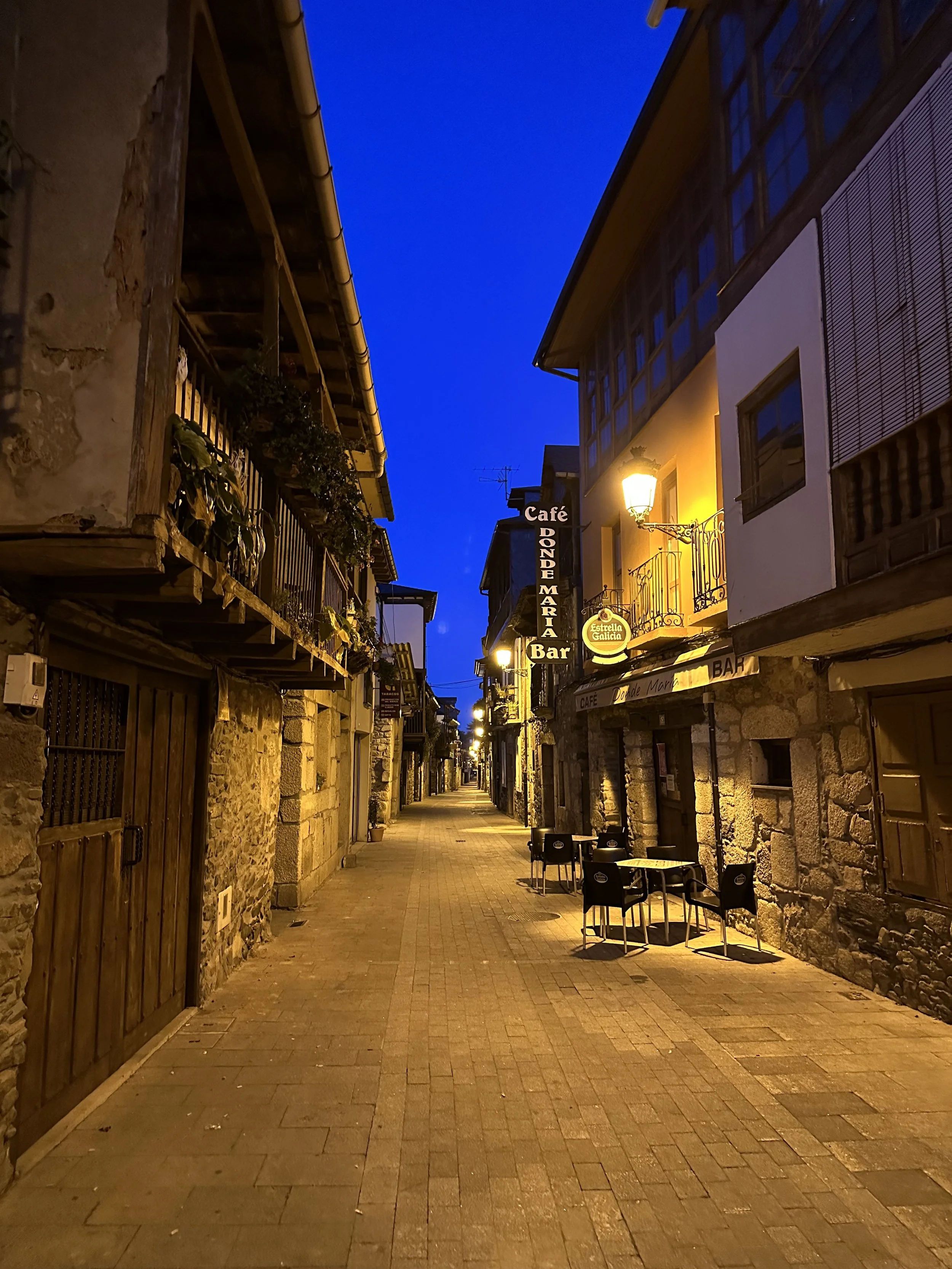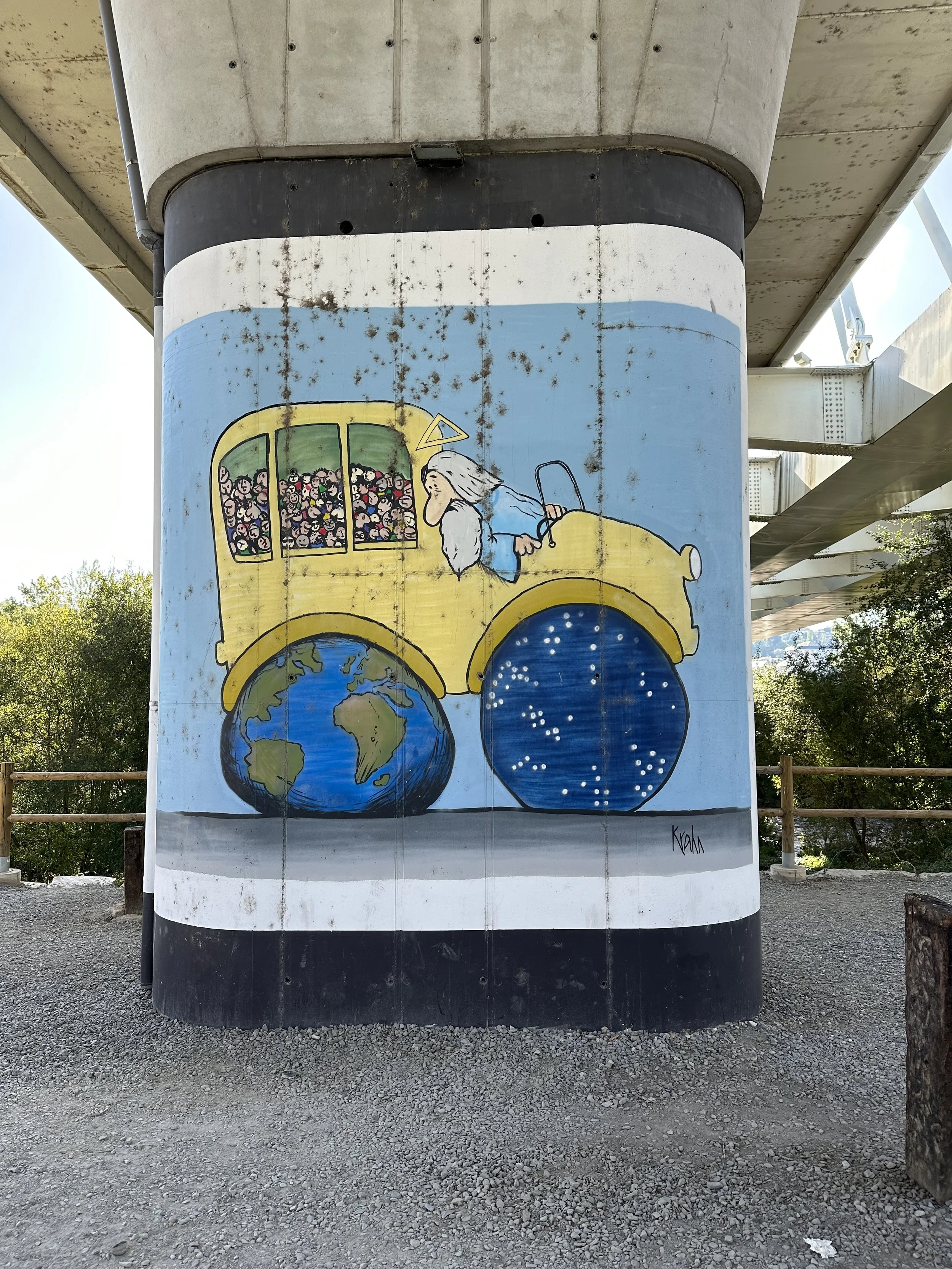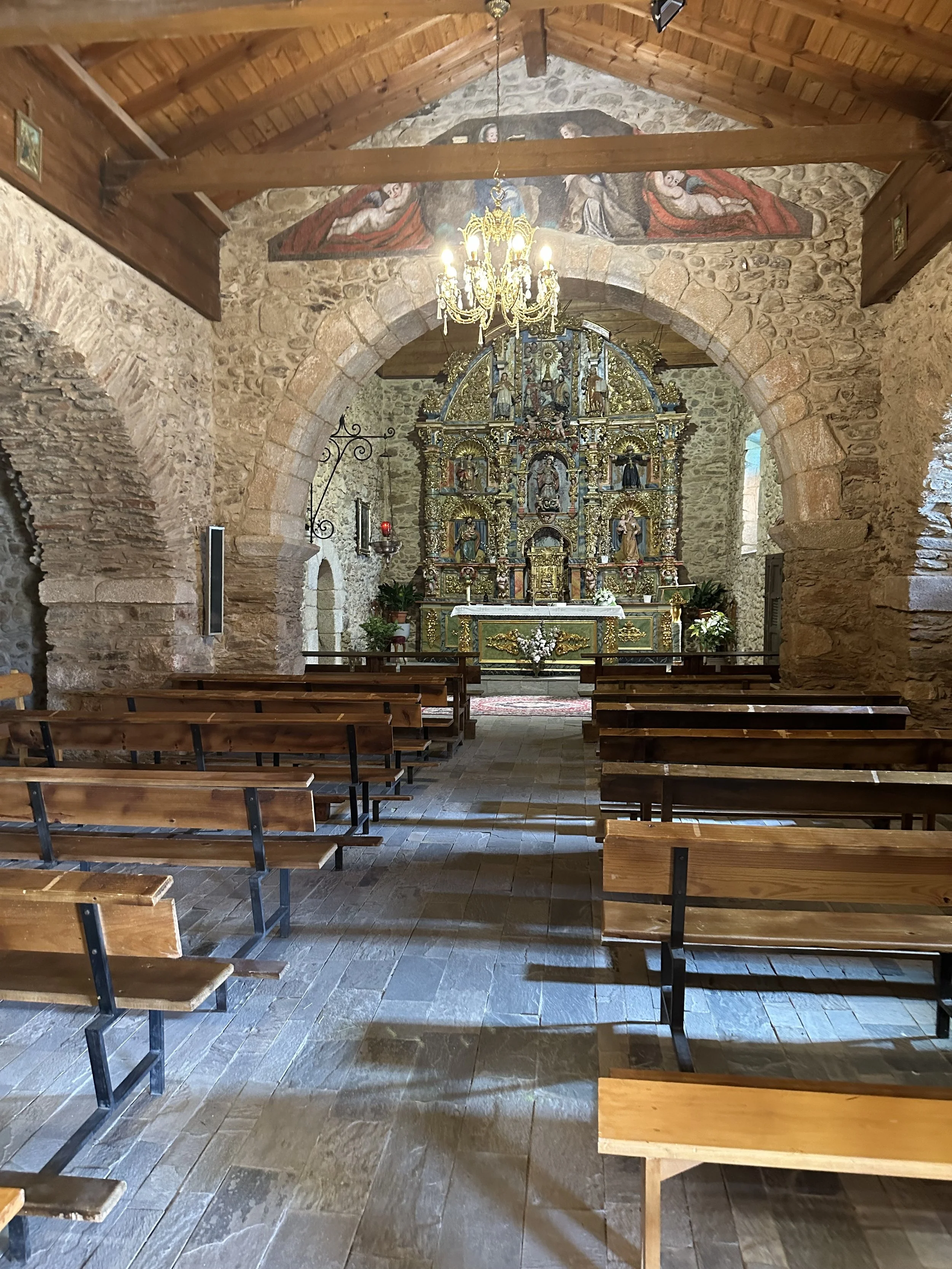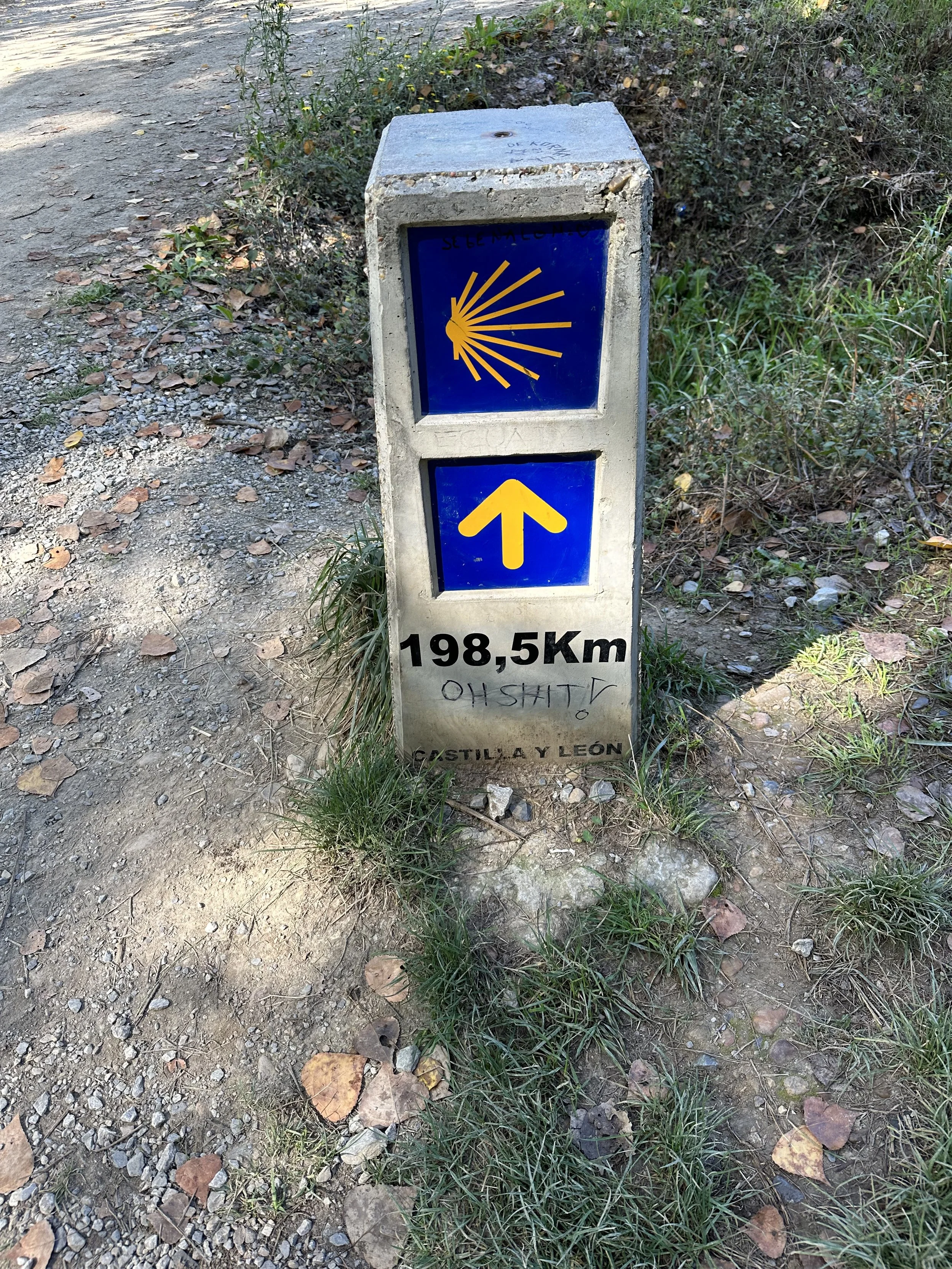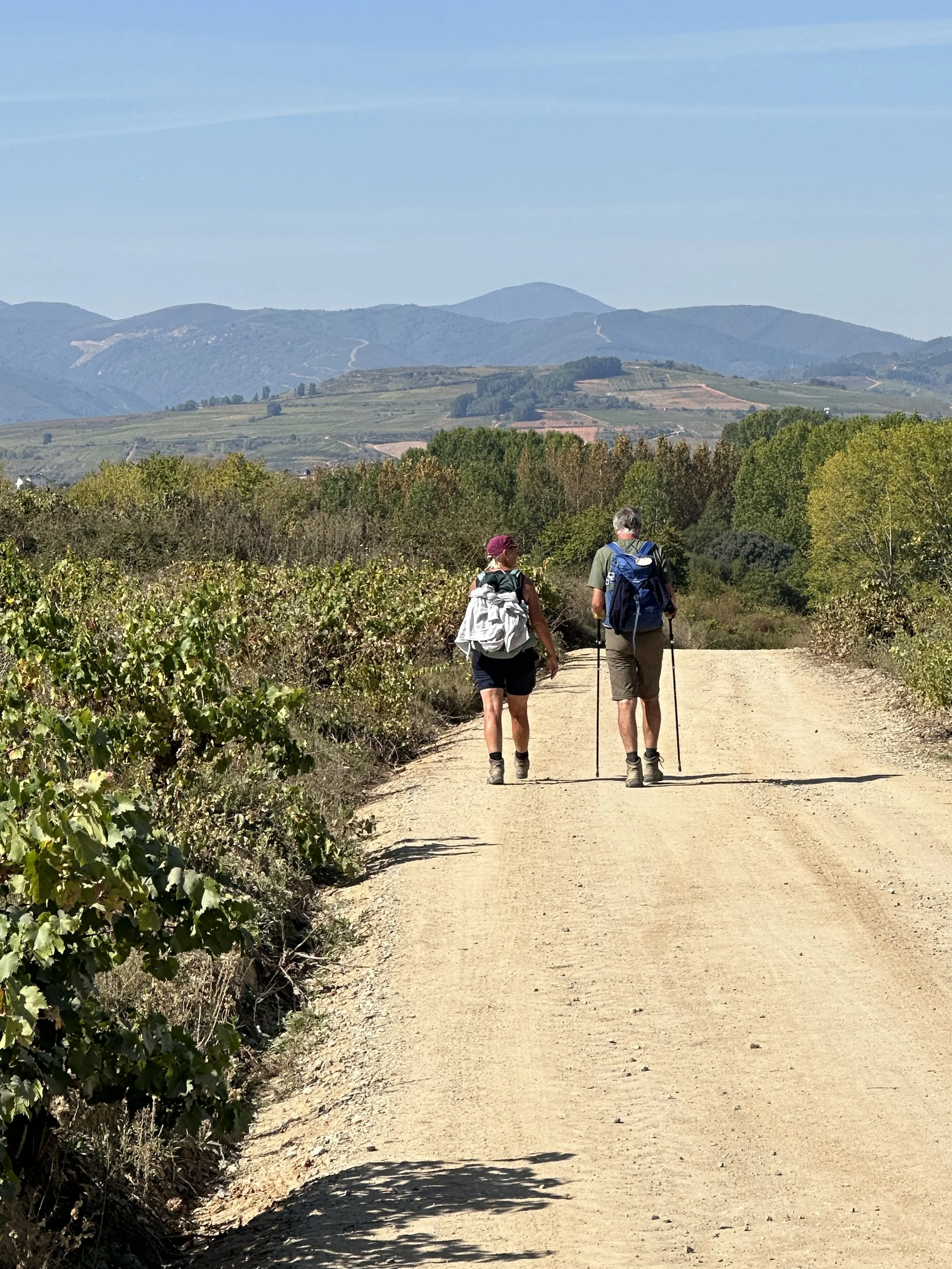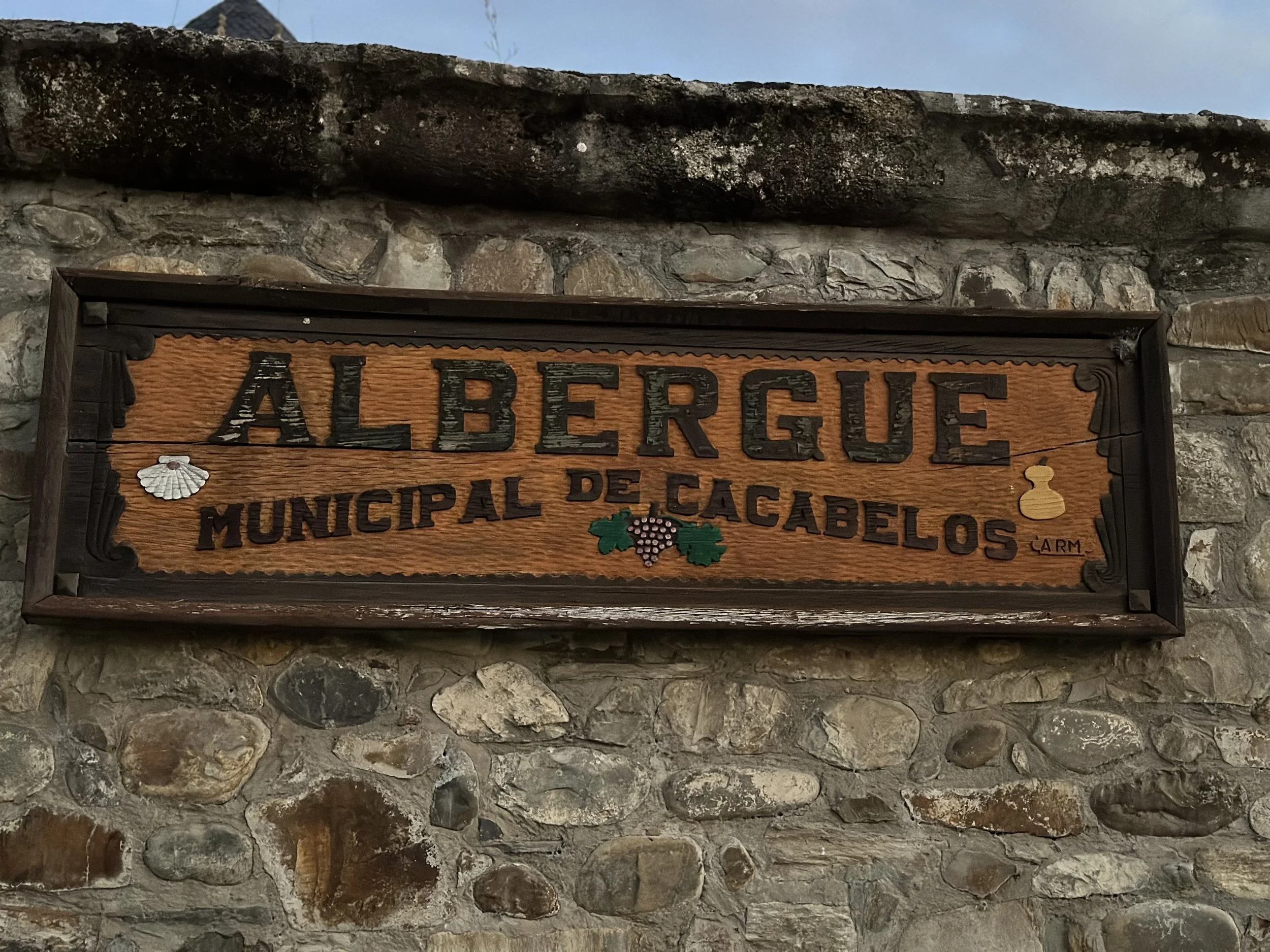Whispers from the Camino—Day 28
October 2. Molinaseca to Cacabelos. 23 km
Leaving Molinaseca in the morning
I awoke in the morning feeling refreshed after a good night of sleep in a private room. I had hoped to find some breakfast near the hotel on the way out of Molinaseca, but not much was open and I was itching to get back on the trail and enjoy the early morning.
Once outside the village the path followed some main roads and the handful of us who had left early found ourselves walking on the sidewalks on both sides trying to find the path that was most enjoyable. I was going pretty much the same pace as a German couple who were on sabbatical from special education teaching for a year. We had sat at a table together drinking beer in the last couple of days. They had asked me to play my “Pilgrim Song” on the ukulele. It still wasn’t finished, but I obliged and it felt good to share the experience with the other pilgrims at the table.
One of many murals in Ponferrada
The breakthrough from the day before at the Cruz de Ferro continued to work on me. My body definitely felt a great deal of relief after the little sobfest that erupted from my body. It was a visceral experience and now my mind was trying to make sense of it. I found myself repeating a short message to myself, “I grieve that we live in a society so addicted to controlling life that we shut ourselves off from the experience of life.”
I knew where the statement came from. Two plus decades before I had served as a bereavement coordinator for a hospice organization. The experience changed my worldview. Despite the constant messaging that I had received from family and community that “you can be anything you want to be as long as you work hard” I had discovered that life doesn’t often play by our rules and according to our plans. One can have the best intentions to create their life, but there are greater forces that more often than not derail our perfectly laid out plans.
One of the many Catholic chapels along the path I fell in love with
In hospice much of my work was meeting with surviving family members and simply helping them come to terms with their reality around loss. The great discovery was that as people acknowledged the actual loss and grief of their lives, a new life would begin to emerge almost organically. They didn’t have to sit down and write out a plan or set a new goal. They only needed to allow the barrier of grief to slowly dissolve away and make room for a new life to appear before them.
After hospice I returned to pastoral ministry and began working exclusively with congregations and church systems that were experiencing decline, which is automatically accompanied by grief. I began using the tools of grief theory and Elizabeth Kubler-Ross’ five stage cycle of grief—denial, anger, bargaining, depression and acceptance.
Less than 200 km to go!
I had one congregation faithfully honor that process. As they acknowledged their grief about being on the precipice of closing an amazing thing happened. The more they made room for being honest about the loss they were experiencing the more new opportunities showed up at their doorstep including a 60-bed family homeless shelter set up in their empty classrooms, a 100-plot community garden on unused land, and partnerships with the city, local non-profits and another congregation. Growth didn’t come from outwitting their decline; it came for accepting it and acknowledging it.
But it was to be a one-time experience. In subsequent positions I discovered how hard it was for congregations to let go of trying to control their narrative and their future. Most energy was spent trying to outsmart the presence of loss and decline rather than to gracefully give in to the presence of loss and entrust their future to the guiding hand of Life or God.
My German couple friends just ahead of me.
I realized that I was grieving. I had seen the power of actually living into grief and loss rather than attempts to cheat it. It had affirmed my Christian belief in death and resurrection—that is, as long as we are prepared to let go and die, the natural way of the Universe was to show up again in some form of new life (what Christians call resurrection).
I was sad that the bulk of congregations likely wouldn’t be able to fully trust their ecclesiastical life to the death and resurrection cycle (or at least not until closure was imminent). But something good happened inside of me. Just like a grief counselor can’t predict when a client will be ready to fully face their grief I realized that as much as I wanted congregations to get their breakthrough, my timing couldn’t be their timing.
I realized that I was placing too much of my identity and happiness on my ability to get congregations to cross that threshold into new life just like my one congregation had years before. But a good counselor learns to be present and trust that new life will show up only when the client is ready. A good counselor makes it safe for the person to work through grief, but doesn’t actually provide the healing itself.
A welcome sight—lodging for the night
I started to consider, “What if I didn’t make my sense of worth dependent on getting churches to cross the threshold into new life, new growth and new possibility?” What if my role was to simply be present to them as they worked through their grief associated with loss and decline? And, what if I committed to find my essential identity and enjoyment in other places—like guitar playing and songwriting, spending time with children and grandchildren, enjoying friends, taking adventures into the mountains and on the rivers, and continuing to write about my pilgrimages and experience of life?”
I did grieve for the Church. I wanted better for them. But I wondered if this day was about separating my sense of worth from what I thought “success” should look like as a pastor.
The pilgrimage was doing its work.

